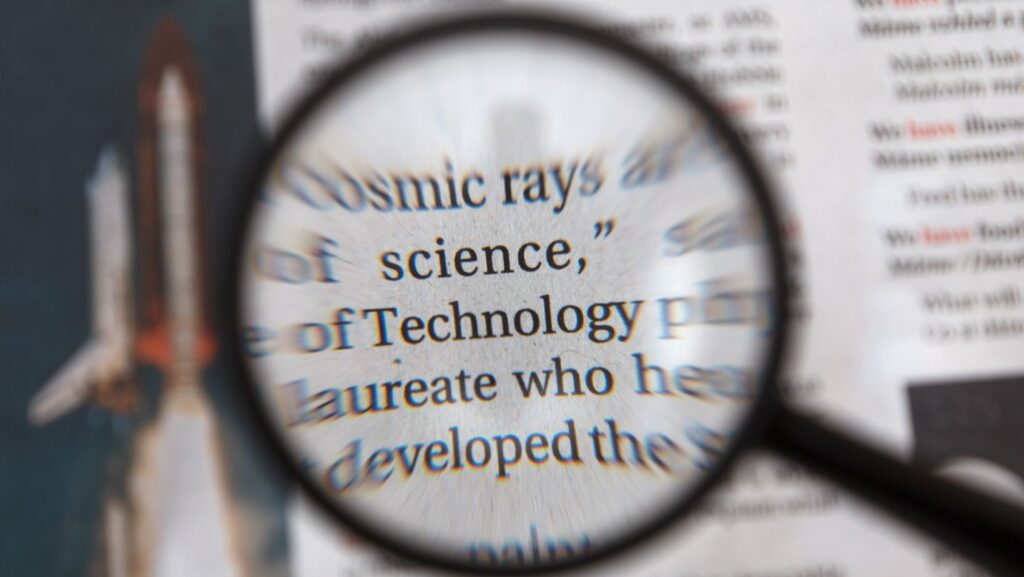Key Takeaways
- Interconnection of Science and Technology: Science seeks to understand the natural world, while technology applies that knowledge to create tools and solutions, illustrating their dynamic relationship.
- Historical Development: Key milestones such as the Agricultural Revolution, Industrial Revolution, and the Space Race highlight the evolution and mutual influence of science and technology throughout history.
- Synergistic Benefits: Scientific discoveries provide the foundation for technological advancements, while technological innovations enhance scientific research capabilities, demonstrating their interdependence.
- Emerging Technologies: Current advancements like Artificial Intelligence, Biotechnology, and Quantum Computing showcase the continuous evolution and impact of the science-technology relationship on various sectors.
- Innovations in Research: Technologies such as data analytics, automation, and collaborative platforms are transforming scientific research methodologies, leading to faster and more accurate discoveries.
- Understanding Global Challenges: Insights from the interplay between science and technology are crucial for addressing modern challenges like climate change, public health, and smart resource management.
Science and technology are intertwined in ways that shape our daily lives and drive innovation. While science seeks to understand the natural world through observation and experimentation, technology applies that knowledge to create tools and solutions. This dynamic relationship fuels advancements that transform industries and improve quality of life.
As scientific discoveries emerge, they often lead to new technologies that can further explore and exploit those findings. Conversely, technological innovations can enhance scientific research, providing new methods for data collection and analysis. Understanding how these fields interact is crucial for grasping the pace of progress in today’s rapidly evolving world.
How Are Science And Technology Related
Science and technology represent two pillars of modern advancement, deeply interconnected and mutually influential. Understanding their definitions and distinctions clarifies their relationship and impact on various fields.
Definition of Science
Science encompasses systematic study and observation of the natural world. It involves formulating hypotheses, conducting experiments, and deriving conclusions based on empirical evidence. Major branches include physics, chemistry, biology, and geology, each contributing unique insights into fundamental principles governing nature. For instance, physics uncovers laws of motion while biology explains the complexities of living organisms. Science’s objective remains knowledge acquisition, propelling understanding of phenomena and fostering continuous inquiry.
Definition of Technology
 Technology refers to the practical application of scientific knowledge to create tools, systems, and solutions that address specific needs. It transforms scientific insights into innovations that enhance everyday life, such as communication devices, medical equipment, and renewable energy systems. Each technological advancement emerges from scientific discoveries; for example, the development of smartphones relies on principles from computer science and electronics. Technology’s focus resides in enhancing efficiency, accessibility, and overall quality of life, illustrating its essential role in advancing society.
Technology refers to the practical application of scientific knowledge to create tools, systems, and solutions that address specific needs. It transforms scientific insights into innovations that enhance everyday life, such as communication devices, medical equipment, and renewable energy systems. Each technological advancement emerges from scientific discoveries; for example, the development of smartphones relies on principles from computer science and electronics. Technology’s focus resides in enhancing efficiency, accessibility, and overall quality of life, illustrating its essential role in advancing society.
Historical Relationship Between Science and Technology
The historical relationship between science and technology showcases their evolution and interdependence over centuries. Both domains influence each other profoundly, driving innovation and societal change.
Key Milestones in Science and Technology
- Agricultural Revolution (circa 10,000 BCE): The transition to farming led to significant advancements in tools and techniques, laying the groundwork for modern agricultural practices.
- Industrial Revolution (18th-19th century): Innovations such as the steam engine and textile machinery highlighted the synergy between scientific discovery and technology, transforming economies and labor.
- Medical Advancements (19th century): Discoveries in microbiology and sanitation significantly impacted public health, with technologies like vaccines emerging from scientific research.
- Information Age (20th century): The invention of the computer revolutionized data processing and communication, demonstrating the rapid pace at which scientific knowledge translates into technological breakthroughs.
- World War I (1914-1918): This conflict spurred developments in technologies like aviation and telecommunications, which were informed by scientific research in physics and engineering.
- World War II (1939-1945): Technological advancements, including radar and atomic energy, arose from scientific inquiry, significantly reshaping military and civilian life.
- Space Race (1957-1975): The competition between the U.S. and the Soviet Union led to breakthroughs in rocketry, satellite technology, and materials science, pushing the boundaries of scientific application.
- Digital Revolution (late 20th century): The rise of the internet and mobile technology exemplified how scientific discoveries in computing and telecommunications transformed global communication and information access.
The Interdependence of Science and Technology
Science and technology exist in a symbiotic relationship, with each field enhancing the other. This dynamic partnership fuels innovation and propels advancements across various sectors.
How Science Drives Technological Advancements
Science generates knowledge that serves as a foundation for technological advancements. Discoveries in fields like physics, chemistry, and biology lead to the invention of new tools. For instance, breakthroughs in materials science have produced stronger, lighter materials used in aviation and construction. Similarly, insights from biology have spurred advancements in biotechnology, leading to medical breakthroughs, such as vaccines and gene editing technologies. Research in energy science has driven the development of renewable energy technologies, significantly impacting global energy strategies.
How Technology Influences Scientific Research
Technology enhances the capabilities of scientific research, enabling more accurate data collection and analysis. Advanced tools, such as electron microscopes and particle accelerators, allow scientists to observe phenomena at unprecedented scales. Data analysis technologies, including artificial intelligence and machine learning, facilitate the processing of vast datasets, revealing patterns that inform scientific inquiry. Additionally, communication technologies connect researchers globally, promoting collaboration and accelerating the pace of discoveries. This interdependence accelerates the advancement of knowledge, leading to further innovations in both science and technology.
Current Trends in Science and Technology
Science and technology continuously evolve, showcasing new trends that enhance their interconnectedness. Understanding these trends reveals the current landscape of innovation and research.
Emerging Technologies
Emerging technologies reshape industries and societies. Examples include:
 Artificial Intelligence (AI): AI algorithms analyze vast data sets and automate complex processes, improving efficiency in sectors like healthcare and finance.
Artificial Intelligence (AI): AI algorithms analyze vast data sets and automate complex processes, improving efficiency in sectors like healthcare and finance.- Biotechnology: Genetic engineering and CRISPR technology enable targeted modifications in organisms, advancing fields such as agriculture and medicine.
- Quantum Computing: Quantum computers leverage quantum bits to perform calculations at unprecedented speeds, with potential applications in cryptography and material science.
- Internet of Things (IoT): IoT devices connect everyday objects to the internet, facilitating real-time data collection and analysis, transforming urban infrastructure and home automation.
- Renewable Energy Technologies: Innovations like solar panels and wind turbines increase energy efficiency and sustainability, addressing global climate challenges.
These technologies illustrate the dynamic relationship between science and technology, driving progress and solutions for modern challenges.
Innovations in Scientific Research
Innovations in scientific research reinforce the synergy between science and technology. Key advancements include:
- Data Analytics: Big data tools enhance the analysis of complex datasets, leading to insights in fields such as genomics and climate science.
- Laboratory Automation: Robotics and automation streamline experimental processes, increasing the speed and accuracy of research outcomes in various disciplines.
- Collaborative Platforms: Digital platforms enable scientists to collaborate globally, sharing data and findings to accelerate discoveries.
- Virtual Reality (VR) and Augmented Reality (AR): VR and AR technologies enhance visualization and interaction in scientific simulations, improving understanding in education and research.
- Nanotechnology: Research in nanotechnology facilitates groundbreaking applications in medicine, electronics, and materials, revolutionizing how scientists approach design and fabrication.
These innovations demonstrate how advancements in technology enhance scientific inquiry, propelling new discoveries and improving research methodologies.
Driving Progress and Innovation
The intricate bond between science and technology is crucial for driving progress and innovation. Each field feeds into the other, creating a cycle of discovery and application that shapes the world. As scientific knowledge expands, it lays the groundwork for new technologies that address pressing challenges.
Conversely, advancements in technology enhance scientific research, allowing for deeper exploration and understanding of complex phenomena. This dynamic relationship not only fosters groundbreaking innovations but also enhances the quality of life across various sectors. Embracing this synergy is essential for navigating the future, where continued collaboration between science and technology will pave the way for transformative solutions.

